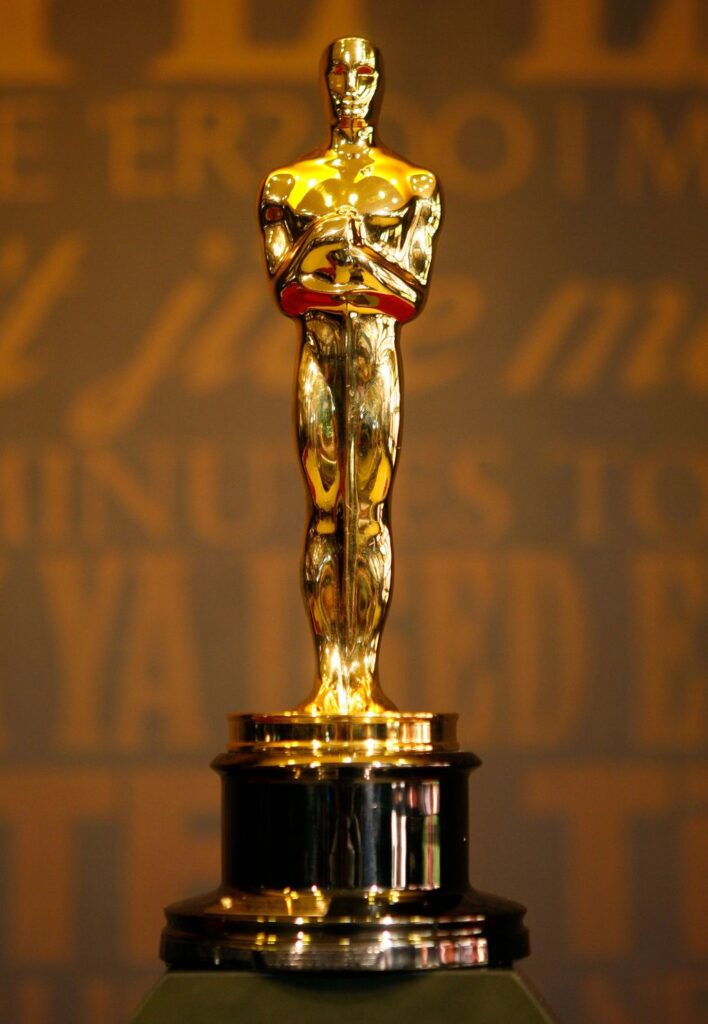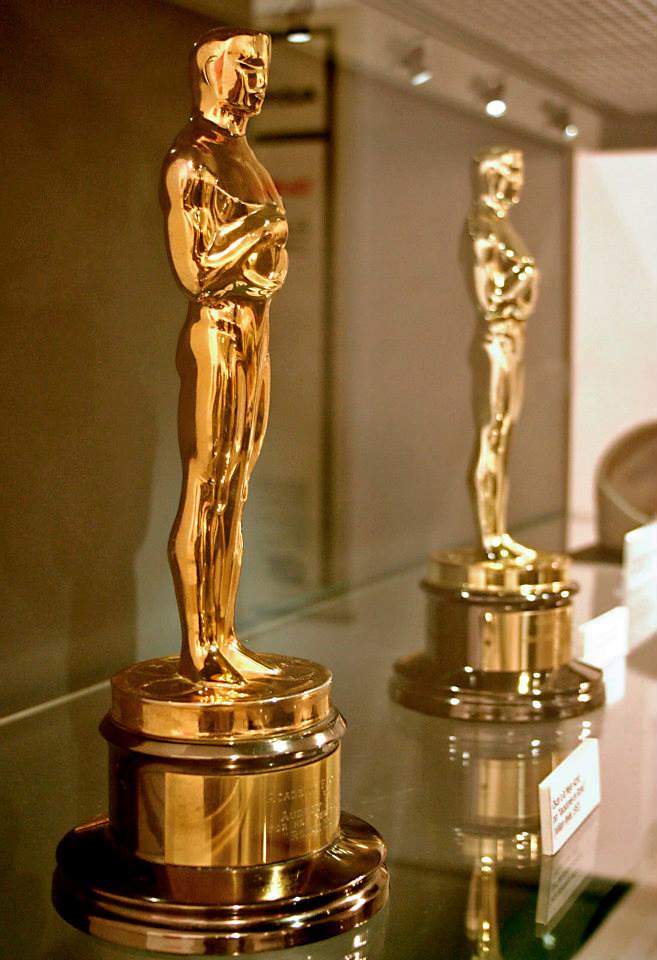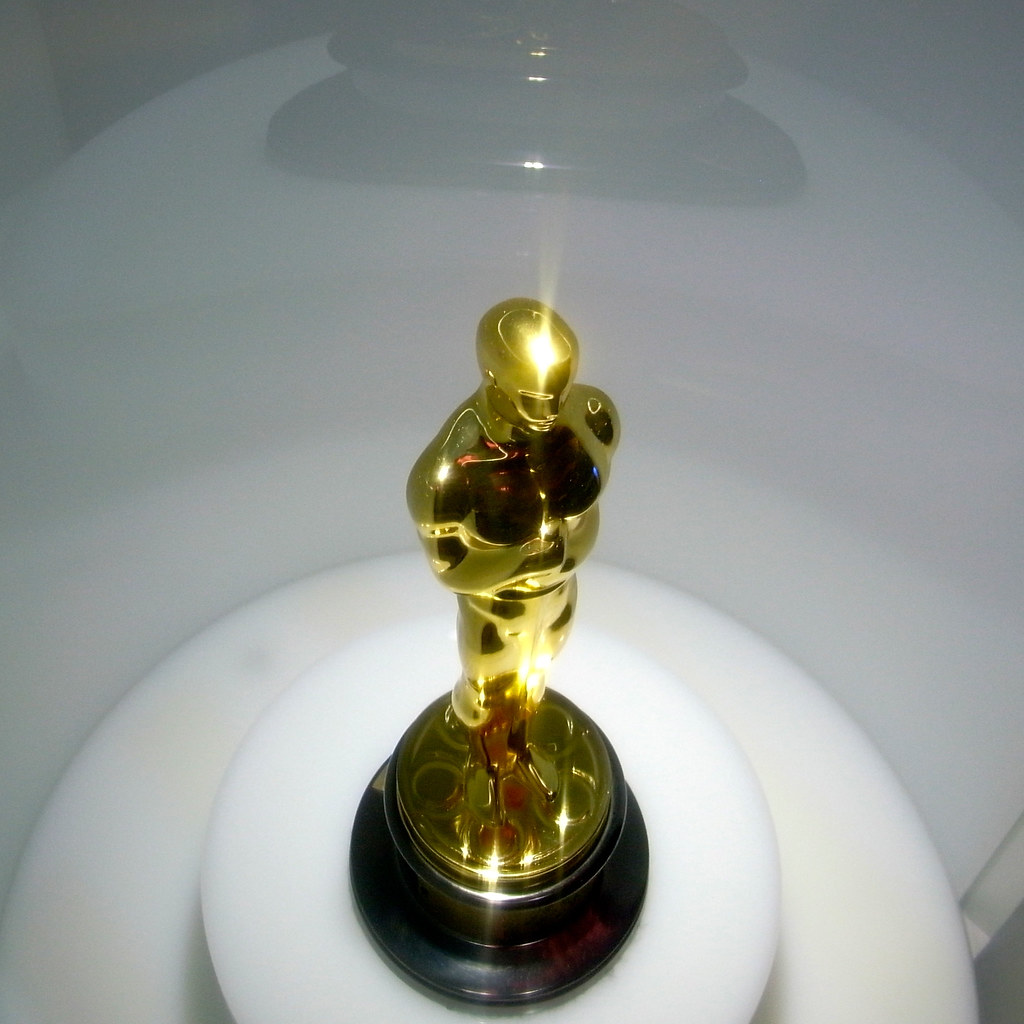The Academy Awards, affectionately known as the Oscars, stand as the pinnacle of cinematic achievement, a night of unparalleled glamour, heartfelt triumphs, and iconic red carpet moments. For nearly a century, this annual spectacle has captivated audiences worldwide, celebrating the very best in film with a glittering ceremony that promises dreams come true and legacies forged. It’s a global event, “the most prestigious awards in the film industry,” as the Academy of Motion Picture Arts and Sciences (AMPAS) proudly asserts, drawing billions of viewers who tune in to witness history in the making and celebrate excellence.
But beyond the dazzling lights, the impeccably tailored suits, and the breathtaking gowns, lies a world of intricate rules, intense pressures, and surprising realities that shape every aspect of the Oscar journey. While we often focus on the winners and their emotional acceptance speeches, there’s so much more happening behind the velvet ropes—elements that, while not always visible, profoundly impact the experience for everyone involved, from the filmmakers to the voters themselves. It’s a system steeped in tradition, yet constantly evolving, and sometimes, those evolutions reveal truths far more intriguing than any whispered gossip, inviting us to look closer at what it truly takes to make an Oscar winner.
So, buckle up, film fanatics! We’re peeling back the layers of Hollywood’s biggest night to uncover some fascinating, sometimes challenging, truths about the Oscars themselves. Forget what you think you know about the easy path to glory; the road to that golden statuette is paved with more than just good intentions and cinematic genius. These are the untold stories, the bureaucratic hurdles, and the intense dynamics that define the ultimate awards season, revealing the intricate machine that powers the world’s oldest worldwide entertainment awards ceremony.

1. The Relentless Campaigning: A Multi-Million Dollar Marathon
Ever wonder how films rise to the top of the Oscar race, seemingly out of nowhere? It’s often not just organic buzz; it’s the result of a meticulously orchestrated, multi-million dollar campaign that can sometimes overshadow the art itself. As the context reveals, “Film companies will spend as much as several million dollars on marketing to awards voters for a film in the running for Best Picture, in attempts to improve chances of receiving Oscars and other film awards conferred in Oscar season.” This isn’t just about placing ads in trade magazines; it’s a sophisticated operation involving private screenings, exclusive Q&As with talent, and relentless effort.
This intense lobbying begins months before the nominations are even announced, transforming the “Oscar season” into a grueling marathon for studios, publicists, and filmmakers alike. Every handshake, every interview, every article is a calculated move to sway the perception of the voting body. While the Academy “enforces rules to limit overt campaigning by its members to try to eliminate excesses and prevent the process from becoming undignified,” the sheer scale of financial investment highlights the high stakes involved. The desire for that golden statuette drives a competitive environment that is as much about strategic marketing prowess as it is about inherent artistic merit.
Winning an Oscar can translate into immense prestige, significantly boosted box office returns, and long-term career benefits. This makes marketing expenditures a calculated, albeit sometimes controversial, investment. It’s a high-stakes poker game where studios bet big on their contenders, hoping to capture the imagination—and votes—of the Academy. This means navigating a fine line: promoting your film vigorously without appearing to “buy” votes, a distinction that is incredibly nuanced in practice.
Imagine pouring millions into convincing a select group of industry professionals that your film is not just good, but *the* deserving choice above all others. This relentless pursuit of recognition is a fundamental, often unseen, aspect of the Oscar journey. It demonstrates that even the most acclaimed films require a powerful, strategic push to cross the finish line and claim cinematic glory.

2. The Strict, Ever-Changing Eligibility Rulebook: Navigating a Labyrinth
Think getting your film seen is hard? Try getting it *eligible* for an Oscar! The Academy operates under a dense rulebook that dictates everything from screening locations to run times, and these rules are far from static. “According to Rules 2 and 3 of the official Academy Awards Rules, a film must open in the previous calendar year, from midnight at the start of January 1 to midnight at the end of December 31, in Los Angeles County, California, and play for seven consecutive days, to qualify.” That’s just the tip of the iceberg for general eligibility.
There are even more specific stipulations for how many times a film must be shown daily, and even the precise time of day for those showings to count. For instance, “The film must be shown at least three times on each day of its qualifying run, with at least one of the daily showings starting between 6 pm and 10 pm local time.” Failure to meet these exact requirements can mean a film is simply out of the running, as exemplified by *The Hurt Locker*, which won Best Picture in 2009 but qualified based on a mid-2009 LA run despite an earlier 2008 release.
And don’t forget the intricate details for specialized categories. Foreign films, for example, strictly require English subtitles and, crucially, “Each country can submit only one film for consideration in the International Feature Film category per year.” This makes the selection process within each nation intensely competitive. Documentaries, too, have a complex path, often requiring specific theatrical runs or qualifying festival awards, coupled with reviews from major publications.
The pandemic introduced further twists, initially waiving the “theatrical requirement” for streaming films for the 93rd Academy Awards, an unprecedented move. This flexibility was short-lived, however, as the requirement was “reinstated starting with the 95th Academy Awards.” These continuous adjustments add layers of complexity and demand constant vigilance from filmmakers and distributors. It’s a bureaucratic maze where a single misstep can mean the difference between eligibility and exclusion, a stark reminder of the intricate framework governing cinematic glory.

3. The Perilous Acceptance Speech: A Race Against the Clock
Receiving an Oscar is a moment of pure euphoria, but it comes with a ticking clock that can turn joy into anxiety: the notoriously strict 45-second acceptance speech limit. “In 2010, the organizers of the Academy Awards announced winners’ acceptance speeches must not run past 45 seconds.” This hard line was drawn, according to organizer Bill Mechanic, “to ensure the elimination of what he termed ‘the single most hated thing on the show’—overly long and embarrassing displays of emotion.” It’s a candid admission that even the most genuine expressions of gratitude can test the patience of a live televised audience and the show’s producers.
Imagine the pressure that comes with such a fleeting opportunity! You’ve just achieved a lifelong dream, your heart is pounding, and you have less than a minute to acknowledge everyone who helped you get there, convey your artistic message, and try not to get played off by the orchestra. This condensed timeframe forces winners to pre-plan meticulously or risk fumbling their moment in the global spotlight. It’s a testament to their composure that so many manage to deliver poignant messages under such intense scrutiny.
In “a further effort to streamline speeches,” the Academy even introduced an on-screen ticker in 2016 for dedications, allowing winners to potentially list more names and collaborators without eating into their precious speaking time. This innovation aimed to ease the burden on recipients while keeping the ceremony on schedule. However, the core challenge of delivering an impactful message within strict constraints remains, making it a unique performance in itself, even after the main award for acting or directing has been secured.
This delicate balance between allowing genuine emotion to shine through and maintaining the swift pacing of a live, three-and-a-half-hour global broadcast is constant. The lighthearted anecdote about host Jimmy Kimmel offering a brand-new jet ski to whoever gave the shortest speech in 2018 perfectly illustrates this ongoing struggle. Mark Bridges won that prize, accepting his Best Costume Design award with remarkable brevity. The joy of winning is undeniable, but the pressure to be concise and impactful in that fleeting moment is a peculiar challenge for every Oscar recipient.

4. The Secretive Voting Process and Lingering Diversity Concerns
Who exactly decides who wins an Oscar, and what does that esteemed body look like? It’s a highly exclusive club, and its demographic makeup has been a source of ongoing discussion and, at times, pointed criticism, reflecting broader industry issues. The “Academy of Motion Picture Arts and Sciences (AMPAS), a professional honorary organization, is composed of 9,905 voting members as of 2024,” making it a powerful collective. These members must be invited to join by the Board of Governors, often based on competitive nomination or significant contributions to motion pictures.
However, a revealing 2012 study by the Los Angeles Times brought to light significant demographic imbalances within this influential group. It found that “Of the 5,100+ active voters confirmed, 94% were Caucasian, 77% were male, and 54% were found to be over the age of 60.” These figures underscore a historical uniformity that raised eyebrows and ignited calls for change. In response, the Academy “launched an initiative to expand its membership and increase diversity” in 2016, acknowledging the need for a more representative voting body.
The voting process itself is intricate and largely secretive, certified by PricewaterhouseCoopers since 1935. For most categories, members vote only within their respective branches—meaning only directors vote for directors, writers for writers, and actors for actors, ensuring expertise in each field. However, for the coveted Best Picture award, “all voting members are eligible to select the nominees,” making it a truly collective and comprehensive decision.
As of 2025, a newly announced procedure further tightens the integrity of the voting. It requires Academy members “to view all nominated films within a category to be eligible to cast a vote in the final round of that category.” This verification process occurs through the Academy’s members-only streaming platform, the Academy Screening Room, or by submitting forms for in-person viewings. This move aims to ensure that votes are cast based on informed viewing, adding another layer of commitment required from the elite voting body.

5. The Complicated Ownership of That Coveted Statuette: More Than Just a Trophy
You win an Oscar, it’s yours, a tangible symbol of your artistic triumph, right? Well, not entirely! While the golden statuette is undeniably a deeply personal symbol of achievement, its ownership comes with a significant caveat, especially for awards given since 1950. The context clarifies a crucial historical divide: “Before 1950, Oscar statuettes were, and remain, the property of the recipient,” meaning those early awards could be freely bought and sold.
However, a pivotal change occurred, making subsequent statuettes subject to a unique and legally binding agreement. “Since then the statuettes have been legally encumbered by the requirement that the statuette be first offered for sale back to the Academy for $1.” This isn’t a mere formality; it’s a powerful contractual agreement designed to protect the award’s prestige. This unique stipulation means that if a winner decides they no longer want their Oscar, or if their heirs wish to part with it, they cannot simply sell it on the open market for thousands or even millions of dollars.
They must first offer it back to the Academy for a single dollar, a symbolic gesture that reinforces the award’s institutional value over its market price. If a winner or their heirs refuse to agree to this stipulation, “then the Academy keeps the statuette,” an outcome that underscores the seriousness of the agreement. This rule was famously enforced when Michael Todd’s grandson attempted to sell his grandfather’s Best Picture Oscar in 1989, only for the Academy to successfully gain a permanent injunction against the sale.
The rationale behind this stringent rule is clear: to prevent the commercialization of the awards and ensure the statuettes remain revered symbols of artistic merit rather than mere commodities to be traded. While some pre-1950 Oscars, like Orson Welles’ for *Citizen Kane*, have indeed fetched significant sums at auction, the post-1950 rule ensures the Academy maintains a degree of control over its most iconic symbol. It transforms the ultimate prize into a form of conditional ownership, a fascinating detail that underscores the Academy’s dedication to preserving the award’s untarnished prestige.

6. The Academy Screening Room: A Modern Portal for Voters in a Digital Age
Gone are the days when physical DVD screeners were the undisputed primary way for Academy members to view all eligible films. The digital age has firmly arrived with the “Academy Screening Room,” a secure streaming platform that is fundamentally changing how members engage with the nominated works. Introduced in 2019, specifically for the 2020 Oscars, this innovative platform allows “voting members of the Academy to view all eligible films in one place,” offering a convenience that provides unparalleled access to the cinematic output of the year.
Initially, this digital portal complemented traditional screeners and in-person screenings, providing an additional, flexible viewing option. However, the global landscape dramatically shifted with the COVID-19 pandemic, forcing a rapid evolution. In 2021, for the 2022 Oscars, the Academy made a decisive move by “banning all physical screeners and in-person screenings, restricting official membership viewing to the Academy Screening Room.” This pivotal shift represented a significant modernization of the voting process, streamlining access and ensuring all members, regardless of their physical location, had an equal opportunity to watch and evaluate the films.
The platform is not just about convenience; it’s also a highly controlled environment designed to maintain integrity. Distributors pay a fee to have their films included on the platform, which is also rigorously protected by “forensic watermarking” and other “video security firms” to prevent unauthorized screen recordings or distribution. This robust security measure is crucial in an industry where piracy is a constant concern, safeguarding the integrity of pre-release content and ensuring the exclusivity of Academy viewing.
The accessibility is undeniable, allowing members to access films via widely used devices like Apple TV and Roku players, integrating seamlessly into modern viewing habits. While eligible films do not *have* to be added to the platform, the Academy actively “advertises them to voting members” when they are. This system, while efficient, introduces a new digital ecosystem that shifts the viewing experience from tangible media to a controlled, secure streaming environment, reflecting the evolving landscape of film distribution and consumption within the elite world of Oscar voting and judging.

7. Accusations of Commercialism: Is the Golden Statuette for Sale?
Hold up, we’ve talked about the glitz and the glamour, but let’s get real about one of the biggest whispers surrounding the Oscars: commercialism. It’s not just about celebrating art, is it? The sheer scale of money pumped into the awards season raises eyebrows, and it’s a topic the Academy has constantly wrestled with. After all, “Film companies will spend as much as several million dollars on marketing to awards voters for a film in the running for Best Picture, in attempts to improve chances of receiving Oscars and other film awards conferred in Oscar season.” That’s a hefty chunk of change, and it raises a valid question: how much is about merit, and how much is about marketing might?
This isn’t your grandma’s bake sale; we’re talking about a sophisticated, high-stakes game. These multi-million dollar campaigns involve everything from exclusive screenings to lavish parties, all designed to influence the perception of the voting body. While the Academy “enforces rules to limit overt campaigning by its members to try to eliminate excesses and prevent the process from becoming undignified,” the very necessity of such rules highlights the relentless financial pressure being exerted behind the scenes, casting a shadow over the “pure” artistic recognition.
The commercial aspect doesn’t stop with pre-award lobbying either. Even the telecast itself has its own rules around advertising. “Advertising is somewhat restricted, as traditionally no film studios or competitors of official Academy Award sponsors may advertise during the telecast.” This restriction aims to prevent a direct commercial free-for-all during the broadcast, but it also underscores the deep commercial interests at play. The entire ecosystem, from campaigning to broadcast, is intertwined with substantial financial investment and commercial considerations, constantly challenging the perception of the Oscars as solely an artistic celebration.

8. Accusations of Bias and the Rocky Road to Diversity
Speaking of shadows, let’s talk about the long-standing accusations of bias that have dogged the Academy Awards, especially concerning representation. For years, the Oscars faced intense scrutiny for its perceived lack of diversity, famously encapsulated by the #OscarsSoWhite movement. This wasn’t just speculation; a 2012 study by the Los Angeles Times laid bare the stark reality of the voting membership’s demographics, revealing a startling uniformity that contradicted the diverse world of cinema.
That study, which examined over 5,100 active voters, found that “94% were Caucasian, 77% were male, and 54% were found to be over the age of 60.” These figures painted a clear picture of an overwhelmingly white, male, and older voting body. Such a demographic makeup inevitably led to questions about whether the awards truly reflected the broader cinematic landscape and the diverse talent within it.
Thankfully, the Academy wasn’t entirely deaf to these criticisms. In a significant move in 2016, the organization “launched an initiative to expand its membership and increase diversity,” a direct acknowledgment of the problem and a commitment to address it. Beyond racial and gender biases, there have also been “Remarks about animated films as children’s genre,” suggesting a subtle bias against certain film types. While progress is being made, the conversation around true representation and fairness remains a crucial part of the Academy Awards’ ongoing evolution.

9. The Rollercoaster of TV Ratings: What Drives Viewership?
Ever noticed how some Oscar nights feel like a global phenomenon, while others barely make a ripple? It’s not just your imagination; the Academy Awards telecast has experienced a significant rollercoaster in its TV ratings, a trend closely tied to the box-office performance of the nominated films. It turns out, audiences love to cheer for movies they’ve actually seen – go figure! This phenomenon proves that the popularity of the films vying for Best Picture can make or break the show’s viewership.
Historically, the numbers soar when blockbusters or widely seen films are in contention. Think back to 1998, a monumental year when “More than 57.25 million viewers tuned to the telecast for the 70th Academy Awards,” thanks in no small part to *Titanic*. Similarly, the 76th Academy Awards, where *The Lord of the Rings: The Return of the King* swept the board, “drew 43.56 million viewers.” These were films that resonated with massive audiences, translating directly into massive viewership for the awards show.
Conversely, when the Best Picture nominees skew towards critically acclaimed but less commercially successful independent films, the ratings often take a hit. The 93rd Academy Awards, for example, plummeted to “an even lower viewership of 10.4 million,” the lowest recorded since Nielsen began tracking totals in 1974. The Academy and broadcasters are keenly aware of this and constantly strategizing; in a bid to “reinvigorate the pre-show and ratings,” the 2023 Oscars organizers even “hired members of the Met Gala creative team.” It’s a constant balancing act between honoring artistic merit and delivering a captivating broadcast.

10. Unexpected Incidents: Slaps and Surprises on the Live Broadcast
The Oscars are meticulously planned, rehearsed, and produced, yet it’s the unscripted moments, the unexpected incidents, that often burn brightest in our collective memory. A live global broadcast is inherently unpredictable, and sometimes, those moments can range from profoundly shocking to historically significant, reminding everyone that even Hollywood’s biggest night isn’t immune to real-time events. One such incident, the “2022 Chris Rock and Will Smith slapping incident,” rocked the ceremony and dominated headlines, a truly unprecedented moment of on-stage conflict that left audiences and attendees stunned.
Beyond dramatic personal confrontations, the ceremony has also been directly impacted by tragic global events. Consider the 40th Academy Awards in 1968, which was “originally scheduled for April 8,” but was solemnly “postponed for two days, because of the assassination of Dr. Martin Luther King, Jr.” Similarly, in 1981, the 53rd Academy Awards was “postponed for one day, after the attempted assassination of President Ronald Reagan and others in Washington, D.C.” These delays highlight the Oscars’ place within the larger cultural and political landscape, occasionally yielding to events far more weighty than any award.
These moments underscore the unique vulnerability of a live show. Unlike pre-recorded events, there’s no editing, no retakes—what happens, happens, for billions to witness instantaneously. This raw, unfiltered element is both a source of its immense appeal and its greatest risk, ensuring that the Oscars remain a fertile ground for the unexpected, captivating audiences with not just the triumphs, but also the unpredictable human drama unfolding on that famous stage.

11. The Ultimate Defiance: Navigating the Oscar’s Unique Ownership Rules
When you hear about “Refusals of the award,” it might conjure images of grand, public gestures, but the reality can be more nuanced, deeply tied to the fascinating and somewhat restrictive ownership rules surrounding the golden statuette itself. While the context explicitly mentions “Refusals of the award” as a category of controversy, it doesn’t elaborate on specific instances of individuals publicly declining the honor. However, the intricacies of ownership, especially for awards granted since 1950, present a unique set of circumstances that could be seen as a form of “conditional” acceptance or a “refusal” of unfettered possession.
For any Oscar statuette bestowed after 1950, its ownership comes with a significant legal caveat: “the statuettes have been legally encumbered by the requirement that the statuette be first offered for sale back to the Academy for $1.” This isn’t just a quirky detail; it’s a binding contract that fundamentally dictates what a winner, or their heirs, can do with their prized possession. The implications are profound: should a winner “refuse to agree to this stipulation,” then the Academy reclaims the award, preventing its commercial sale and preserving its institutional value. This unique condition creates a fascinating tension, highlighting the Academy’s dedication to protecting the Oscar’s prestige.
This rule has been famously enforced, as seen when “Michael Todd’s grandson tried to sell Todd’s Best Picture Oscar for his 1956 production of Around the World in 80 Days.” The Academy swiftly intervened, successfully gaining “a permanent injunction against the sale,” firmly upholding its contractual rights. While some pre-1950 Oscars fetched sums at auction because they predate this agreement, the post-1950 rule creates a peculiar conflict over the statuette’s future, ensuring its return to the Academy rather than private circulation.

12. The Ever-Evolving Spectacle: From Intimate Dinners to Global Extravaganzas
From its humble beginnings as a private dinner to its current status as a colossal global television event, the Academy Awards ceremony has undergone an incredible evolution, mirroring the transformation of the film industry itself. Imagine the very first Oscars in 1929: “a private dinner function at the Hollywood Roosevelt Hotel, with an audience of about 270 people,” and the entire “ceremony ran for 15 minutes.” Winners were even announced three months in advance! What a stark contrast to the elaborate, hours-long spectacle we witness today, broadcast live to billions worldwide.
The shift from private affair to public phenomenon began early. By 1930, the second ceremony made its radio debut, and by 1953, it was first televised, pushing the Oscars into the homes of millions. Over the decades, it blossomed into “an elaborate extravaganza,” with red carpets showcasing “the creations of the most prominent fashion designers of the day,” and live performances of Best Original Song nominees. The Academy Awards now holds the distinction of being “the world’s longest-running awards show televised live from the United States to all time zones in North America and worldwide.”
The Academy has also constantly adjusted the ceremony’s timing and format to maximize viewership and relevance. Initially held on Mondays, it moved to Sundays in 1999 to attract “more viewers.” More significantly, in 2004, the ceremony was advanced to late February to “shorten the intense lobbying and ad campaigns” and sidestep clashes with the NCAA basketball tournament. Further shifts occurred in 2018 and 2024, demonstrating a relentless pursuit of optimal broadcast strategy and audience engagement. This continuous adaptation ensures that the Oscars remains a dynamic, evolving spectacle.
So there you have it, a deeper dive behind the curtains of the Academy Awards, revealing that the golden statuette is surrounded by more than just glamour. From the intense politicking and the never-ending dance with commercialism to the weighty accusations of bias and the dramatic shifts in viewership, the Oscars are a living, breathing entity, constantly adapting, sometimes stumbling, but always striving to maintain its position as the pinnacle of cinematic achievement. It’s a complex tapestry woven with ambition, art, controversy, and an undeniable allure that keeps us all tuning in, year after year, eager to witness the next chapter in this incredible story of Hollywood’s biggest night. What a ride!



